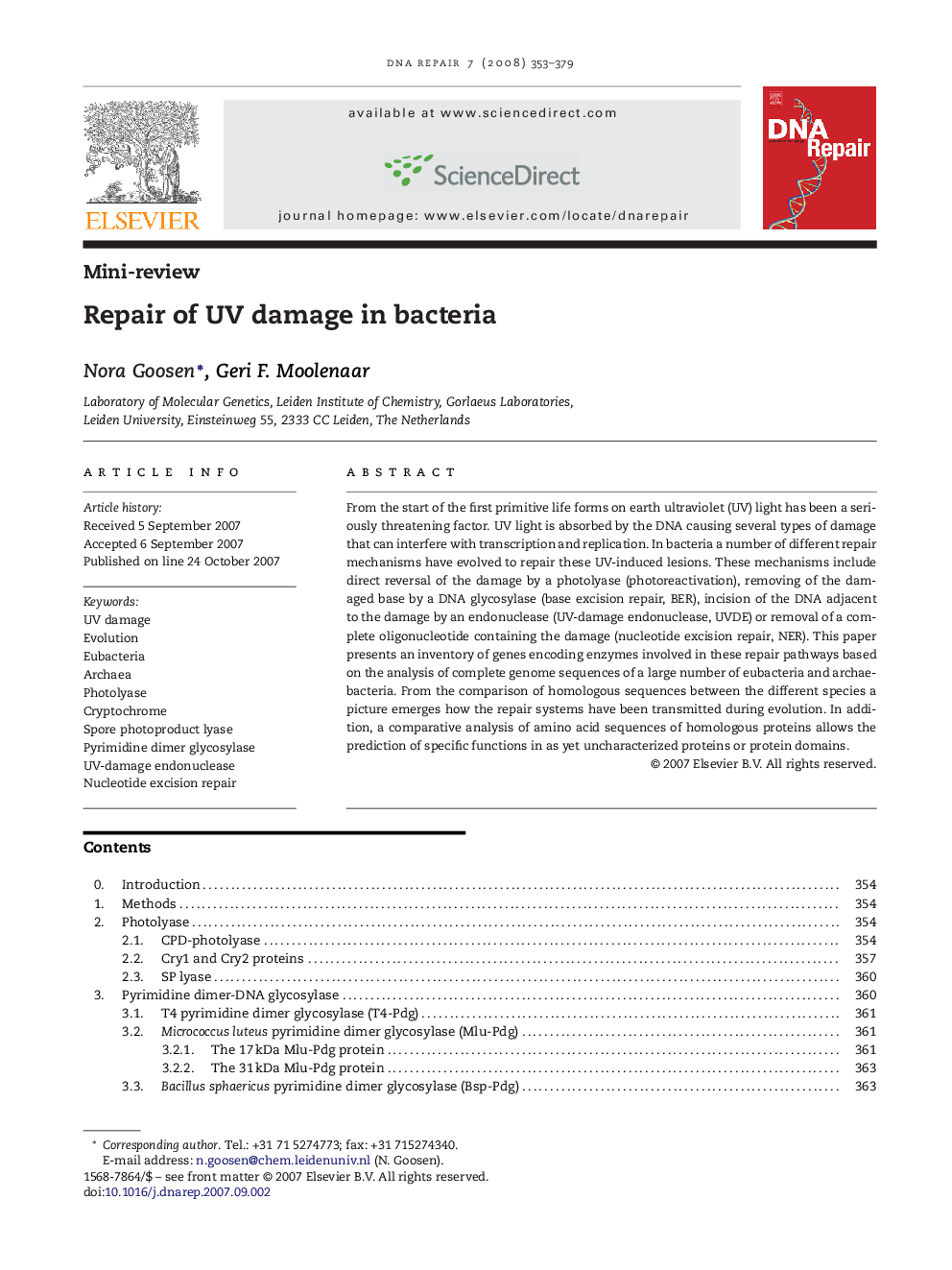| کد مقاله | کد نشریه | سال انتشار | مقاله انگلیسی | نسخه تمام متن |
|---|---|---|---|---|
| 1981245 | 1061909 | 2008 | 27 صفحه PDF | دانلود رایگان |

From the start of the first primitive life forms on earth ultraviolet (UV) light has been a seriously threatening factor. UV light is absorbed by the DNA causing several types of damage that can interfere with transcription and replication. In bacteria a number of different repair mechanisms have evolved to repair these UV-induced lesions. These mechanisms include direct reversal of the damage by a photolyase (photoreactivation), removing of the damaged base by a DNA glycosylase (base excision repair, BER), incision of the DNA adjacent to the damage by an endonuclease (UV-damage endonuclease, UVDE) or removal of a complete oligonucleotide containing the damage (nucleotide excision repair, NER). This paper presents an inventory of genes encoding enzymes involved in these repair pathways based on the analysis of complete genome sequences of a large number of eubacteria and archaebacteria. From the comparison of homologous sequences between the different species a picture emerges how the repair systems have been transmitted during evolution. In addition, a comparative analysis of amino acid sequences of homologous proteins allows the prediction of specific functions in as yet uncharacterized proteins or protein domains.
Journal: DNA Repair - Volume 7, Issue 3, 1 March 2008, Pages 353–379